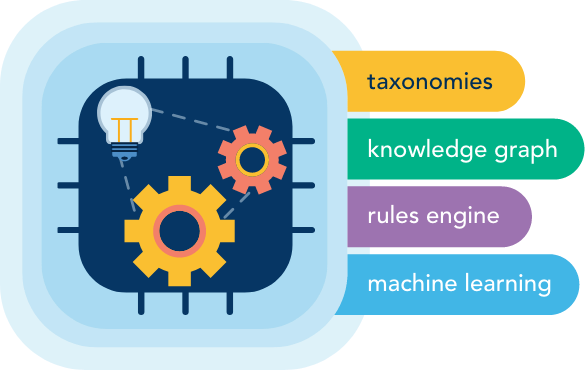
Enterprises looking to optimize their growing volumes of content are looking to help structure this data. The key to success starts with a taxonomy. So what is a taxonomy? A taxonomy applies structure to content components and the relationships between them. It’s a system of content management that groups information based on terms stored as metadata.
Taxonomies Are Content Optimizers
Enterprises can use taxonomies as an organizational tool to help users find the information they need, help search engines index content on a website, and even classify products or services so customers can find them more easily. They can be used to organize resources in any subject area—from science to literature, to business.
Many enterprises struggle with an overwhelming volume of content that users or customers need to access. Using taxonomies to organize content into logical associations helps organize and manage content so that it can be more easily accessed by downstream operations like search. So how can enterprises adopt and use taxonomies for internal and external cases?
An expert.ai customer found a solution for that.
The company, a global leader in publishing, education and research, offers content, platforms and services to fuel the world’s knowledge ecosystem. The publisher also offers content classification and enrichment services, using knowledge models and broad subject domain taxonomies to cover various topics. They have enriched approximately seven million articles and 57 journals with their handcrafted approach to knowledge models.
Their content enrichment accomplishments includes successfully classifying 15,000 articles from 1997 to the present day for one of their customers, a task that involved seven different taxonomies in their knowledge models.
They also worked with a pharmaceutical sales team to determine how often certain drug manufacturers were cited in journal articles so they could approach those manufacturers for sales opportunities. The task required the publisher to build a taxonomy of drug manufacturers that were discussed in journal articles and auto-classification of 10 years of articles.
Secret to Scalable Taxonomies Revealed
So how does this savvy publisher achieve these feats? To power its content enrichment services, it relies heavily on economized taxonomies to increase content relevance, discoverability and use. It’s a process that builds on their knowledge models, ranging from very simple, to highly complex. Yet to scale their content enrichment offerings, the idea that you would build out a new taxonomy for every knowledge model isn’t sustainable. So, the company debunks the idea that you must start with a blank slate. Instead, they rely on previous works and leverage AI tools for economy and efficiency. Here’s how it works.
Reuse What You Have
Creating a new taxonomy takes time and resources. Rather than build out new taxonomies and knowledge models for every use case, the publisher builds on what they already have. For example, when they receive a new content classification request, they start with a taxonomy. If a taxonomy already exists, they reuse it. If it has to be built, they keep it broad and shallow. A broad and shallow taxonomy has many weakly connected topics rather than a small number of strongly connected topics. The benefit is that it allows them to be productive quickly in new areas and maintain expertise in specific areas.
Recycle What’s Outdated
Just because taxonomy is old doesn’t mean it doesn’t have value. The publisher takes old, outdated taxonomies and makes them usable again. For example, they took a 25-year-old taxonomy and recycled it by using developers and subject matter experts to update outdated terms and tidy up the Simple Knowledge Organization System (SKOS). It was a process in which developers cleaned up the SKOS, imported it into their central knowledge store and source management system, and then brought in SMEs to update the outdated terms. Then testing was performed to make sure the updated taxonomy was accurate.
Use Technology to Your Advantage
The publisher uses automation to take some of the manual work of creating taxonomies and knowledge models. Taxonomy and thesauri lay the foundation for auto-classification, providing the vocabulary for which rules are established so content can be accurately tagged. They also use the expert.ai platform to discover taxonomies and programmatically tag and classify content by topic to customize a taxonomy. Combined with natural language processing, it can help break down, tag and classify language within the content to save time.
Taxonomies are a powerful tool for enterprise content management. They allow companies to manage their content and create knowledge models to make content more usable while laying the foundation for automation to drive process efficiencies, increase revenue and make better decisions. Creating taxonomies with AI-driven natural language platforms like expert.ai can accelerate taxonomy time to value. Contact expert.ai to learn more.


